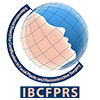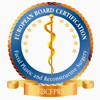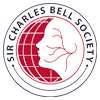Bell's Palsy is a condition caused by temporary loss of function of the facial nerve, leading to weakness and asymmetry in the facial muscles. This can cause both aesthetic and functional concerns in patients. Fortunately, with the right exercise programs and rehabilitation techniques, it is possible to strengthen facial muscles and regain nerve function. In this article, we have included details about the facial palsy exercises mentioned in this article. You can have a detailed idea about facial exercises for bell's palsy by browsing these details. We wish you all healthy days and good reading.
Benefits of Exercises for Bell’s Palsy
Bell's palsy exercises, which patients are asked to adhere to strictly, are qualified to offer permanent solutions. For this reason, if patients are sensitive about physical therapy and stick to the program, the benefits of Bell's palsy exercises also increase. Therefore Benefits of exercises for Bell's palsy;
- It stimulates the facial nerves as a whole.
- Restores the old strength of the muscles.
- Increases muscle mobility.
- It activates the muscles as well as correcting the incoordination in the muscles.
- Improvement in facial symmetry is observed.
- Revitalizes the eye muscles and the muscles around the eyes.
- Loss of muscle function is restored without surgical intervention.
- It helps to restore the sense of taste.
- With facial palsy exercises, many symptoms experienced by patients disappear.
Since most of these benefits are seen in all patients, it may also be necessary to make an individualized assessment.
Facial Exercises For Bell’s Palsy Recovery
Antiviral medications, steroids and facial palsy exercises are very important for the patient's recovery. Therefore, although medications are an important part of the treatment process, the most important thing is the facial exercise programs developed and prepared for each region. The physiotherapist will prepare an appropriate program according to the affected area and the symptoms seen, and the physiotherapist restores the lost strength to the muscles by performing movements, especially with Bell's palsy exercises. At this point, Bell's palsy facial exercises and the area affected;
- Activating the muscles in the upper face area by frowning
- Gaining subtle facial expressions by practicing facial expressions
- Activating the muscles in the forehead area with forehead wrinkling
- Activating the muscles around the lips with the method of puckering the lips
- Strengthening the muscles in the lower face area with jaw and mouth movements
- Activating the muscles in and around the eyes with eyebrow movements
- Activating the lip contour with lip lifting and lowering movements
- Recovering expressions with a smile while stroking the cheeks
- Chewing by taking the inner cheek between the teeth and activating the muscles in the mouth area
- Removing symptoms of eyes not closing or staying open with eye movements
In addition to these exercises, Bell's palsy facial exercises will be added to the program as deemed appropriate by the doctor and physiotherapist.
Are Facial Exercises for Bell’s Palsy Recovery Effective?
In cases where surgery is not a priority, patients should act in accordance with the treatment to accelerate recovery. For this reason, bell's palsy physical therapy is determined according to the condition of the person's muscles and the degree of progression of the disease. Thanks to the program prepared according to the person, effective recovery will take place. In particular, mimic therapy or other methods will improve even the patient's fine facial muscles and expression. Apart from reducing the symptoms of the disease, it will ensure that facial resuscitation surgery is not needed.
How do facial exercises help with Bell's palsy?
The primary purpose of facial exercises is to ensure that the muscles are strong and restore forgotten functions. It offers a remedy for loss of function, inability to close the lids around the eyes and eyelids. It is possible to achieve results by carrying out the physical therapy process together with medications and physical therapy. Patients usually recover within 6 months. Some patients return to normal in 6 months as facial exercises for bell's palsy give results in a short time and directly. Loss of function and sense of taste are restored. The important thing is that the patient sticks to the routine and process. Otherwise, it will not be possible to get effective results from the exercises and it may be necessary to resort to facial resuscitation surgery.
What are the best facial exercises for Bell’s palsy?
The patient's general condition and assessment criteria will determine the best facial exercises for Bell's palsy. The exercises will vary according to the different symptoms, the degree of muscle weakness and the degree of loss of function. Your doctor and physiotherapist will provide you with the most accurate information.
Exercises can be performed to strengthen the affected muscles, provide fine motor control and improve muscle coordination disorders. Bell's palsy physical therapy will also be determined after a detailed examination. Below is bell's palsy physical therapy. These exercises, which are performed according to the condition of the patient's muscles, provide faster results from physical therapy.
- Exercises to strengthen the affected facial muscles
- Exercises to lift the cheek muscles
- Softening muscle stiffness by squeezing and opening the jaw muscles
- Puckering the lips, breathing and working the neck muscles
- Exercises for fine motor control
- Voluntary frowning and muscle relaxation exercises
- Exercises for wrinkling the nose
- Blinking exercises
- Exercises for muscle coordination
- Exercises to quickly switch to various facial expressions
- Facial exercises focused on chewing movements
- Exercises to work all muscles by making complex facial expressions
- Symmetry exercises
- Providing symmetry in the forehead muscles by raising the eyebrows at the same time
- When smiling, take care to work both sides of the lips equally
- Trying to make controlled eye movements
- Use of massage techniques to activate facial muscles
Rubbing the face and relaxing the muscles with various strokes are also part of physical therapy. Massage techniques are functional to remove stiffness in the muscles while accelerating blood circulation. Circular strokes on the jaw line will also activate the facial muscles. Using massage and personalized therapy techniques correctly helps the treatment to give results in a short time.
What other treatments can you combine with exercises for Bell’s palsy?
Although exercises for the face are important in Bell's palsy, these exercises can be combined with different treatment methods. In addition to exercises, massage therapy and appropriate massage techniques also provide effective results. In particular, the doctor's use of these in addition to the exercises positively affects the treatment process.
Recently, neuromuscular retraining is also frequently used to achieve more effective results. In the biofeedback method, the patient's facial movements are visualized and converted into video. Since feedback is provided with video, real timing is also captured in muscle control. The condition of the muscles is analyzed in detail with video, mirror and photographs. It is an effective method for shortening the treatment by improving muscle movements.
FAQ
How Does The Anatomy of The Facial Nerve Affect Bell’s Palsy Recovery?
Since the facial anatomy is a whole, muscles, nerves and muscle groups interact with each other. Bell's palsy causes muscle spasms and muscle weakness in the deformed cranial nerve VII area. It affects not only facial expressions, but also eye movements, eye contour and even the sense of taste. Therefore, facial shape, anatomy of the muscles and nerves should be evaluated together while performing Bell's palsy exercises. Facial exercises for Bell's palsy, which include all of them and will be performed as a whole, help to achieve effective results even in long-term facial paralysis. Especially doing exercises to activate the area called cranial nerve VII has a positive effect on recovery.
Can Bell’s Palsy Affect Taste, and Do Exercises Help Restore It?
Cranial nerve VII, which has an important role in facial anatomy, is also closely related to the sense of taste. Therefore, Bell's Palsy affects the sense of taste along with muscle dysfunction. For this reason, Facial palsy exercises will help you regain your sense of taste.
How Can I Track My Progress During Bell’s Palsy Recovery?
As long as you continue with the medication, the treatment programs prescribed by the doctor and Bell's palsy physical therapy, improvement will be seen soon. You should therefore keep in touch with your doctor about the condition of the muscles, nerves and the frequency of symptoms. After the exercises, the condition of the muscles and the muscles that have been activated should be assessed. Continuing with the appropriate Bell's palsy physical therapy and taking your medication will also ensure effective follow-up during the recovery process.
How often should facial exercises be performed to accelerate recovery in Bell's Palsy?
This is entirely up to the patient's will. However, studies have shown that the more facial palsy exercises are performed, the faster the recovery rate increases. Thanks to the exercises, it will be possible to restore the functions and muscle losses not only in a certain area but also in the whole face. The patient should continue the exercises as much as he/she can do daily. It would be appropriate to get clearer information from your doctor.














